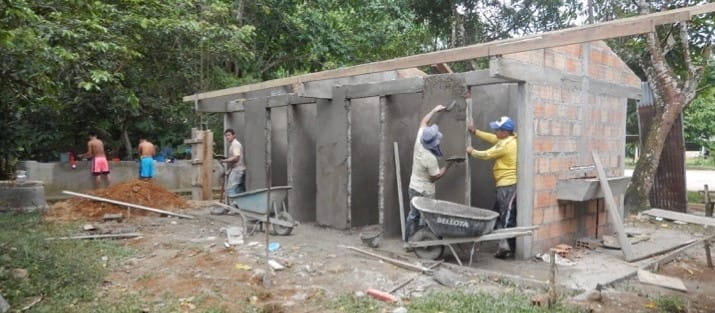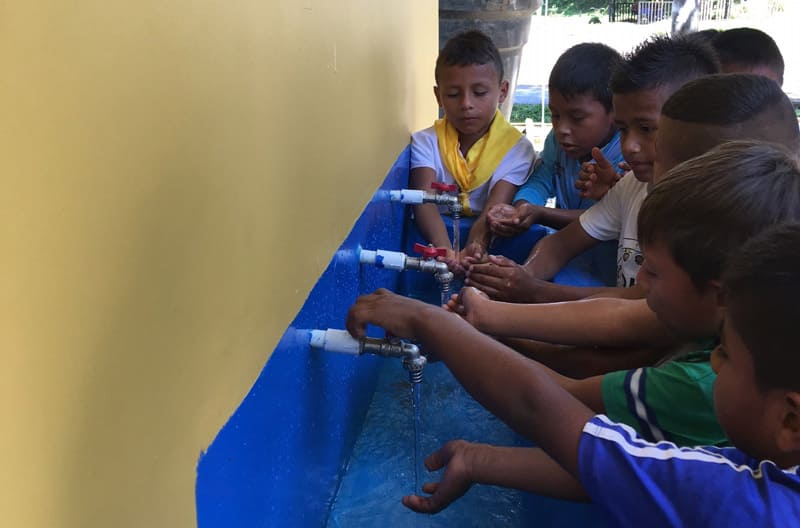This is an update on our Clean Water For Yachaikury School project with Amazon Conservation Team.
Primary Accomplishments
- A dam was constructed to supply water to the Yachaikury educational center.
- A tank was constructed to filter the water.
- 14 water access points drawing from the La Pedregosa stream and a quality water source were installed within the property of the center. This included the bathrooms, kitchen, laundry, washbasin, laboratory, nursery, cultural center, fish pond and duck pond.
Yachaikury Aqueduct – Intake Point
- The intake for the Yachaikury headquarters aqueduct system was built in the middle basin area of the La Pedregosa stream, which flows through the Yurayaco indigenous reserve. The stream’s high state of conservation enables a constant flow throughout the year.
- The dam constructed to supply water to the school is made of concrete and holds 120 cubic meters of water.
- The dam is connected to a separate 12-cubic-meter concrete tank where the water captured by the dam is filtered. This tank is covered by a metal mesh to prevent debris from falling into the tank.
Renovation of Yachaikury’s Bathrooms

Yachaikury’s original sanitary facilities were built over 16 years ago, and had badly deteriorated. With only two toilets and no showers, they did not meet the needs of the school population.
The renovated facilities contain six toilets, as well as six showers. The residents no longer need to travel to the river to bathe. With enough facilities to meet the needs of the school population, the environmental health of the entire school is improved.

Quality of Life
As Yachaikury is a boarding school, it is important to provide not only a nurturing learning environment, but also a comfortable and safe living environment. In total, around 140 students attend Yachaikury (50 girls and 90 boys). The educational center is also home to five families of the school’s leadership and teachers. ACT’s renovation of the school’s aqueduct and water system has greatly increased the quality of life of Yachaikury’s students and staff, providing direct access to clean water on the school grounds and in the staff’s family homes.
Yachaikury’s student welfare coordinator, Nelcy, reports that having access to clean potable water for drinking, food preparation, cooking, washing dishes and clothes, and general personal hygiene has resulted in reduced frequencies of gastrointestinal diseases (stomach pain, diarrhea) and skin maladies (pimples and rashes).

The student Mayerly Mutumbajoy comments: “Before, we had to go to the river to access the water. In the summer, the students had to perform mingas (joint chores) to carry water and bring it to the boarding facility.” Formerly, the necessity of sending students to the river for water and hygiene needs posed a risk to the younger children and made it more difficult to supervise the older youths during extracurricular times.
The new aqueduct and water system will also help to improve food sovereignty at Yachaikury. Staff member Waira Jacanamijoy highlights the fact that now the gardens and orchards of the school can also be continuously irrigated. She also believes, now that the school has a constant supply of water, that there needs to be some awareness-raising in the school regarding is management to help develop new habits that ensure that this precious resource is not wasted.


